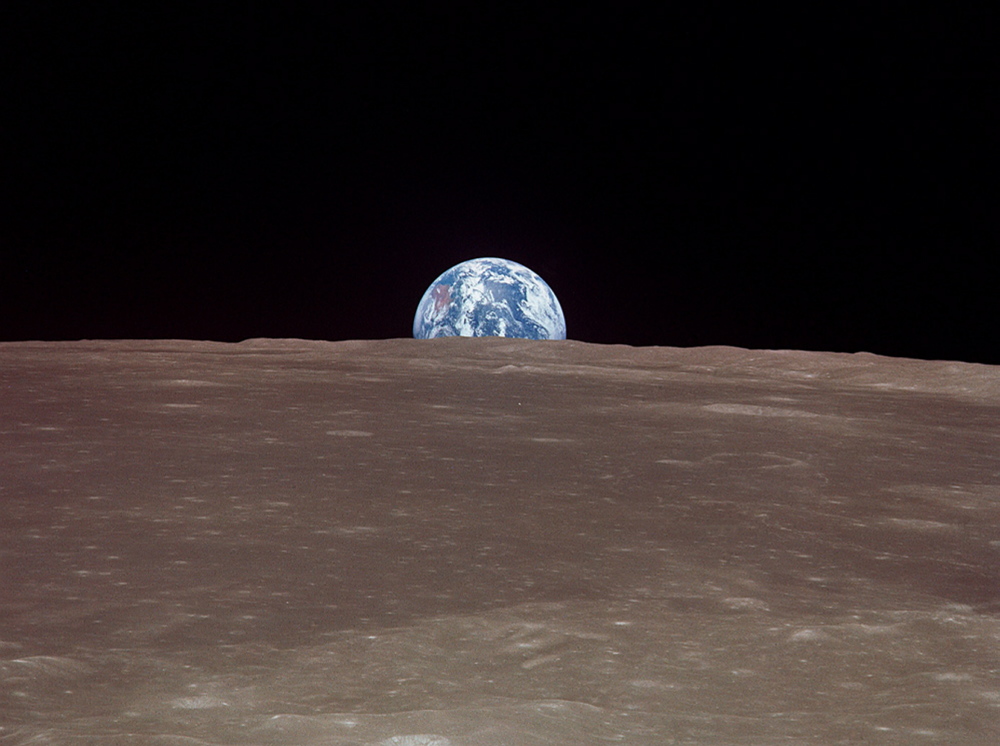A group wants to bring Jewish, Hindu and Chinese works to lunar surface, joining a Bible.
Think of Earth as a giant supercomputer, with the moon as our backup hard drive. That’s the vision behind plans to use the moon as off-planet storage for the religious, cultural and even genetic trappings of humanity.
Proponents of this idea initially plan to rely on groups vying to win millions in a Google-backed space-flight competition, with the first of those missions possibly departing by the end of 2015.
Eventually, commercial moon landers may help carry a diverse library of cultural and biological records to the lunar surface, to be preserved in case Earth suffers a pandemic plague, nuclear holocaust or lethal asteroid strike.
The first artifacts to shoot for the moon might be three religious and philosophical texts. The Torah on the Moon project, based in Tel Aviv, has been courting private firms to deliver a handwritten Jewish scroll called a sefer Torah to the lunar surface. Later flights would carry Hindu scriptures called the Veda and the I Ching, an ancient Chinese philosophical work.
Each document would be housed in a capsule designed to protect it from the moon’s harsh radiation and temperature changes for at least 10,000 years.
“These three texts are among Earth’s most ancient documents, created over 3,000 years ago,” says Torah on the Moon founder Paul Aouizerate. “They are significant to billions of people.”
Google is offering $20 million to the first privately funded group to build a robot that lands on the moon, travels about 550 yards and sends back two videos – all by the end of 2015.
Eighteen teams from around the world are competing, including two U.S. firms that were recently awarded partnerships with NASA granting them access to testing labs and scientific expertise. Regardless of who takes home Google’s lunar gold, the Torah on the Moon project would offer to pay to piggyback on a mission that is capable of carrying its capsule.
Last week, the engineering arm of the European Space Agency confirmed that it has been commissioned to test the space-hardiness of the capsule that would contain the sefer Torah.
Aouizerate hopes to raise an estimated $16 million to $20 million by asking believers to sponsor religious scribes to pen each of the document’s 304,805 characters. Different funding models will be developed for the Hindu and Chinese documents.
The texts would join a Bible left on the moon in 1971 by Apollo 15 commander David Scott. The red leather Bible sits on the control console of an Apollo moon buggy. The Christian practices of Apollo astronauts enraged atheist activists, who said that religion had no place on federally funded space missions.
The Torah on the Moon project sidesteps that concern, since X Prize contenders are not allowed to accept government funding. The texts should also be the first of many objects sent into space in the name of preservation.
“I don’t think these religions are claiming the moon. It’s about saving our culture, saving the humanities,” says Naveen Jain, chief executive of Moon Express, one of the X Prize contenders.
Evolutionary biologist Richard Dawkins says that the moon could even become a “cosmic tombstone” if humans become extinct.
“We should be using it to store the best humanity has ever had to offer, like the works of Michelangelo, Beethoven, Schubert and Shakespeare,” he says.
The Torah on the Moon team is expected to announce details of its plans, including which team will fly its capsule to the moon, in the next few months.
Send questions/comments to the editors.




Success. Please wait for the page to reload. If the page does not reload within 5 seconds, please refresh the page.
Enter your email and password to access comments.
Hi, to comment on stories you must . This profile is in addition to your subscription and website login.
Already have a commenting profile? .
Invalid username/password.
Please check your email to confirm and complete your registration.
Only subscribers are eligible to post comments. Please subscribe or login first for digital access. Here’s why.
Use the form below to reset your password. When you've submitted your account email, we will send an email with a reset code.